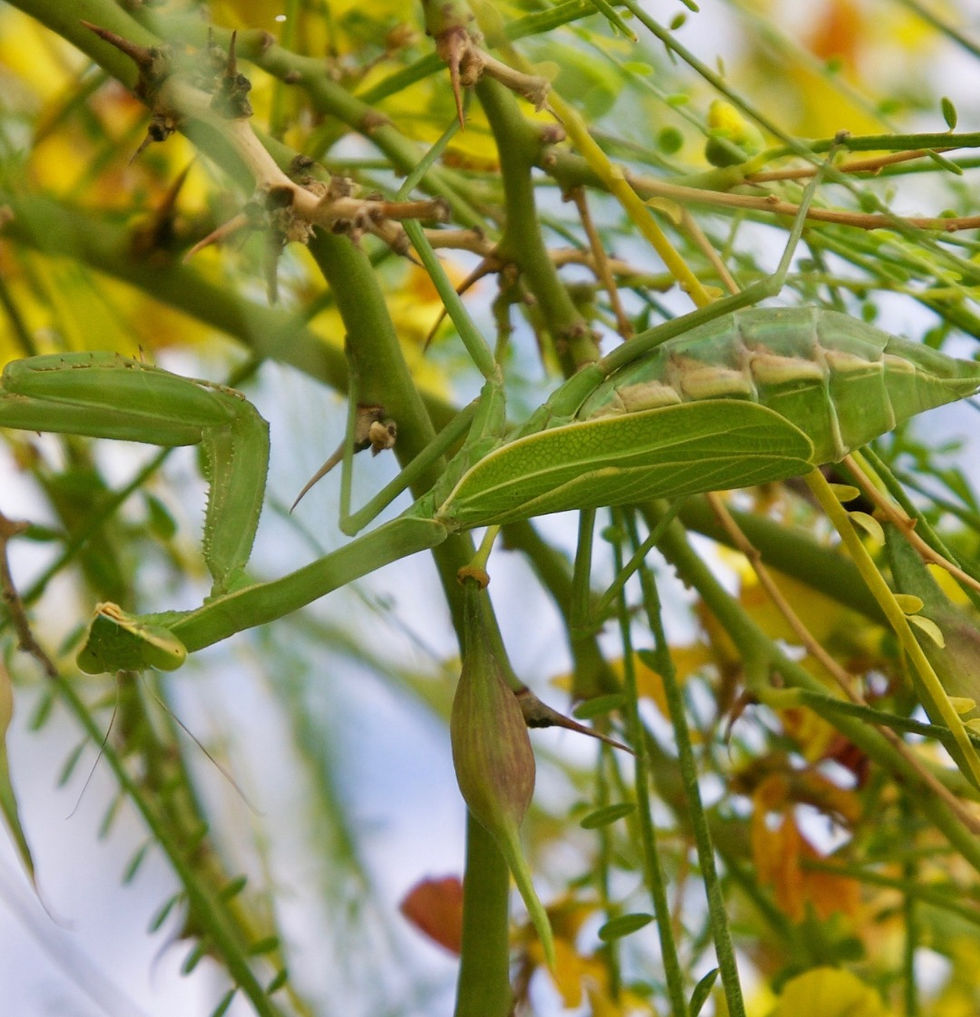The Most Popular Plants in the High Desert of California.
- Dec 23, 2022
- 3 min read
The desert is home to a variety of plants. We picked our favorite ten to share with you. Those plants are called annual plants because they escape from drowning in the dryer months by nurturing themselves during the winter and rainy seasons. For instance, the fleshy stem of the cactus stores water, while the spiny leaves provide shade to protect the stem sections. Some other plants grow more during the spring by absorbing more water. This vegetation becomes a rich source for migratory birds.
Tamarisk Trees
This type of plant composes of about 50 – 60 species of flowers. They are native to very dry regions like Eurasia and Africa. We have about 150 of them inside our Twentynine Palms land that hedges the 5 acres perimeter. When we purchased the property in 2020, they were weak and dying. We water them with extended hoses for about 8 months until we put them on irrigation. Two years later, they look healthy and happy. See pictures from before and after here.

Barrel Cactus
It belongs to two different families, the Echinocactus and the Ferocactus. Both originated in southwestern North America to Mexico. They are very present in Arizona as well. Its staple features a crest of spines that converge at the top to form a bright yellow center. Large specimens are so desirable they've been known to get plucked out of medians by cactus poachers.

Palo Verde Tree
Native to the Sonoran Deserts. Not many trees can hack it in the desert heat, but the feathery neon green foliage of the Palo Verde provides adequate dappled shade. It survives in the sun by conducting photosynthesis through its bark and leaves.

Larrea Tridentata Common Creosote or Evergreen Oak
Is the most pervasive plant in the Preserve. Resilient and hardy, it can grow in elevations up to 4,000 feet and is found in all four southwestern deserts. The flowers have five yellow petals and grow up to 25 mm in diameter. It exhibits a unique creosote odor, which is why it is named the Creosote bush. Larrea Tridentata contains many medicinal properties like antibacterial, antifungal, and antitumor, and has been used as an antioxidant, anticancer, and to treat many illnesses including infertility, rheumatism, arthritis, diabetes, gallbladder and kidney stones, pain, and inflammation. It is also used as a nutritional supplement. The Pima and other indigenous people chewed creosote gum to ward off dysentery and stomach ailments.

Joshua Tree (Yucca Brevifolia Jaegeriana)
The Mormons named the Joshua tree after the biblical figure Joshua. These members of the yucca genus are the older in the region and became a symbol of the desert and provide habitat for animals that range from the Scott's Oriole to the Northern flicker. They grow in elevations ranging from 3,000 to 7,000 feet and live for about 150 years. As protection from predation, Joshua Trees often germinate under nurse plants until the age of four years. Once their spiny limbs develop, they eventually overtake the nurse plant. Due to climate change, the Joshua Trees are losing their habitat.

Cholla (Cactaceae)
It is another famous plant in the high desert of California and is part of the cactus family. Due to its photosynthesis, Cholla is an alternative pathway to convert energy from the sun into food. Mesophyll cells in the leaves convert carbon dioxide into organic acids. That allows the Cholla to conserve water by keeping the stomata closed during the day. It is the only cactus with sheaths that cover the spine. They look charming and fuzzy, but the spines of Cholla can be harmful. Avoid getting too close.

Yucca
Yucca is a genus of perennial shrubs and trees from the Asparagaceae family. There are more than 40/50 species. These sharp-leaves native hosts magical mutualistic pollination. It has starchy roots used to produce tapioca and cassava flour. Native to the Sonoran Deserts. Not many trees can hack it in the desert heat, but the feathery neon green foliage of the Palo Verde provides adequate dappled shade. It survives in the sun by conducting photosynthesis through its bark and leaves.
















Comments